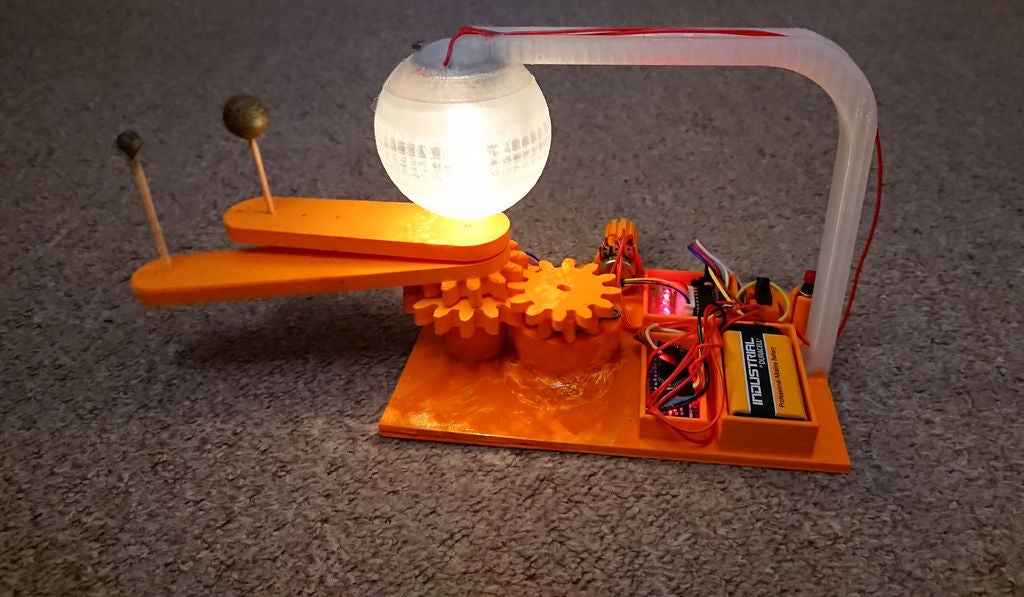Learn about exoplanet exploration with this Arduino-powered apparatus

How do we know that planets exist outside of our solar system? While too far away to observe directly, with extremely sensitive equipment like the Kepler space telescope it’s possible to detect changes in light as these exoplanets pass in front of a star. For an excellent visualization of how this all works, check out Marcin Poblock’s simplified model in the video below.
The 3D-printed apparatus employs an Arduino Nano that controls the motion of two planets around a light bulb “star,” via a stepper motor and gear system. The variable light is then sensed by an LDR on a separate Nano-driven device. This sends info to a computer over serial to be graphed in real-time, and can also store it on an SD card for later analysis.
While this project won’t necessarily help you explore our galaxy, it will provide you with a fun way to learn about the principle of exoplanet detection using the transit method.
May 30th, 2020 at 14:58:33
Thank You for the information